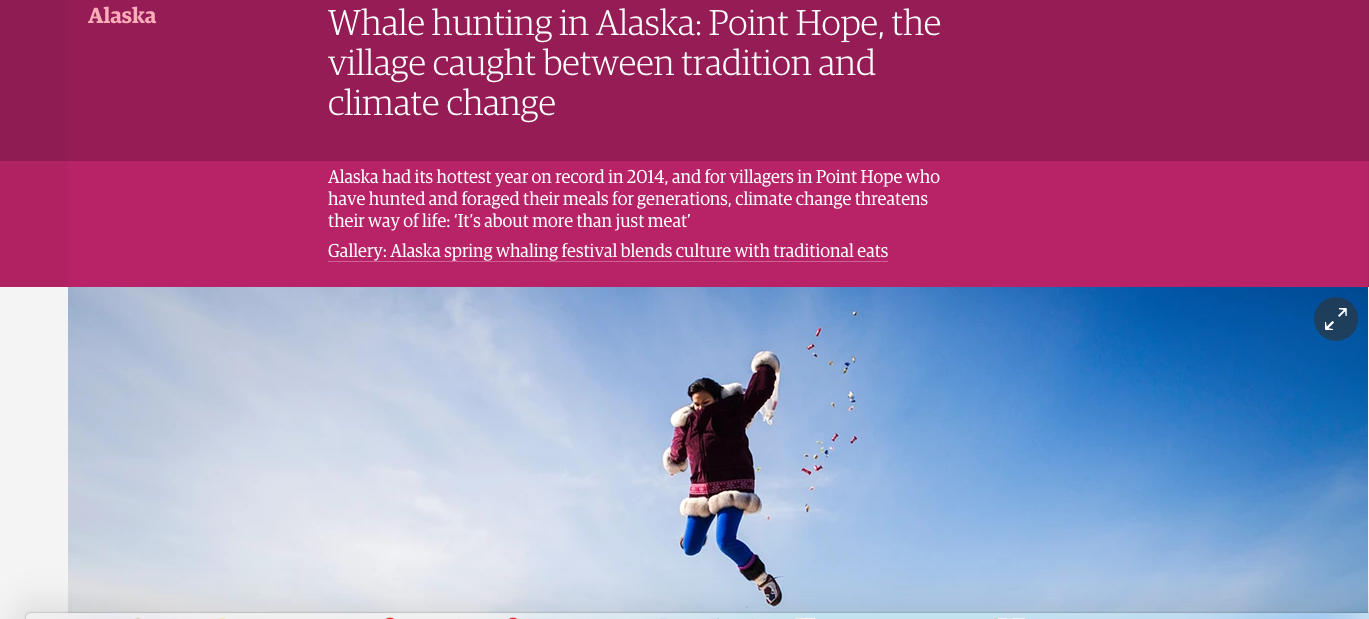Photographer Katie Orlinsky and I had an epic adventure in Point Hope this summer where we met many gracious people who educated us on how a warming climate complicates whaling. Today we have a story about climate change, hunting and eating bowhead whale in The Guardian, an international newspaper based in England. It’s the second part in our project on climate change, hunting and traditional foods, funded by the Pulitzer Center for Crisis Reporting.
(For a real treat, check out Katie’s slide show.)
Point Hope, Alaska — For the Inupiat villagers who have made their homes on this finger of land in the Chukchi Sea for generations, nothing is more important than the bowhead whale.
The calendar revolves around seasons for hunting, fishing and gathering. It’s a lifestyle Alaskans call “subsistence”, which is as much cultural tradition as economic necessity in one of the state’s most northern villages.
About 900 people live in Point Hope. The village store prices are double what people pay 700 miles south in Anchorage. A gallon of milk might be $12. Two pounds of hamburger patties: $23. In most homes, wild and foraged foods make up at least half of the menu. The village has two stores, a school, several churches and a restaurant that serves pizza, Chinese food and hamburgers. Alcohol can’t be legally possessed, sold or imported.
All year, the village looks forward to spring whaling, when crews of men thread through leads in the sea ice, quietly paddling in seal-skin boats, looking for smooth black shapes rising out of the water.
The few massive bowheads taken by villagers each year supply thousands of pounds of dense protein. Beyond that, whale meat is considered an Alaska Native soul food. Hunting, butchering and distributing the animal, village leaders say, is how elders teach young people the culture.
“Without the whale,” said Steve Oomittuk, the former mayor of the city and former vice-president of the tribe, “we wouldn’t be who we are.”
In recent years, however, the much-anticipated whale hunt has run up against a warming Arctic. A bowhead can be 60 feet long and weigh 75 tons. Successful whaling crews have always hauled the massive animals on to the ice using a block and tackle. The last few seasons, the ice has been more unstable than elders in the village have ever seen.
“It’s getting harder and harder, the ice is thinner,” Oomittuk said. “We can’t pull up the whale.”
Read more here.

Thank you for your reporting on the importance of subsistence, whaling, and climate change. Alaska is ground zero to see some of the epic impacts that will eventually reach into the more populated zones of the planet. You capture the urgency of the issue along with a respect for the people of the north who are experiencing it first hand. I am so happy you are writing to explain Alaska to the world Julia.
Thanks, man. I still owe you the circular sander. Dammit.
Hello on Katie’s slideshow the last name for Eva is incorrect. It should be Kinneveauk.
Thanks! Ill pass this along